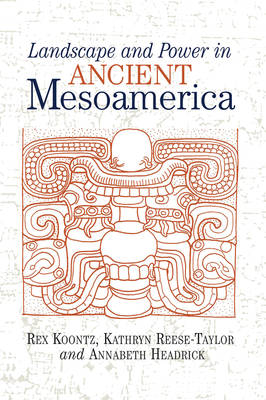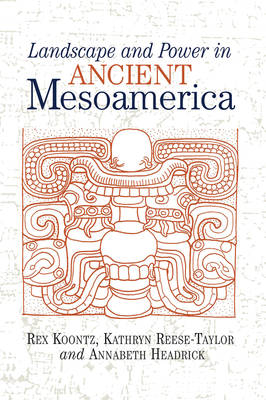
Door een staking bij bpost kan je online bestelling op dit moment iets langer onderweg zijn dan voorzien. Dringend iets nodig? Onze winkels ontvangen jou met open armen!
- Afhalen na 1 uur in een winkel met voorraad
- Gratis thuislevering in België vanaf € 30
- Ruim aanbod met 7 miljoen producten
Door een staking bij bpost kan je online bestelling op dit moment iets langer onderweg zijn dan voorzien. Dringend iets nodig? Onze winkels ontvangen jou met open armen!
- Afhalen na 1 uur in een winkel met voorraad
- Gratis thuislevering in België vanaf € 30
- Ruim aanbod met 7 miljoen producten
Zoeken
Landscape and Power in Ancient Mesoamerica
Rex Koontz, Kathryn Reese-Taylor, Annabeth Headrick
Hardcover | Engels
€ 274,95
+ 549 punten
Uitvoering
Omschrijving
From the early cities in the second millennium BC to the Aztec capital of Tenochtitlan on the eve of the Spanish conquest, Ancient Mesoamericans created landscapes full of meaning and power in the center of their urban spaces. The sixteenth century description of Tenochtitlan by Bernal Diaz del Castillo and the archaeological remnants of Teotihuacan attest to the power and centrality of these urban configurations in Ancient Mesoamerican history. In Landscape and Power in Ancient Mesoamerica, Rex Koontz, Kathryn Reese-Taylor, and Annabeth Headrick explore the cultural logic that structured and generated these centers.Through case studies of specific urban spaces and their meanings, the authors examine the general principles by which the Ancient Mesoamericans created meaningful urban space. In a profoundly interdisciplinary exchange involving both archaeologists and art historians, this volume connects the symbolism of those landscapes, the performances that activated this symbolism, and the cultural poetics of these ensembles.
Specificaties
Betrokkenen
- Auteur(s):
- Uitgeverij:
Inhoud
- Aantal bladzijden:
- 416
- Taal:
- Engels
Eigenschappen
- Productcode (EAN):
- 9780367096441
- Verschijningsdatum:
- 13/06/2019
- Uitvoering:
- Hardcover
- Formaat:
- Genaaid
- Afmetingen:
- 152 mm x 229 mm
- Gewicht:
- 721 g

Alleen bij Standaard Boekhandel
+ 549 punten op je klantenkaart van Standaard Boekhandel
Beoordelingen
We publiceren alleen reviews die voldoen aan de voorwaarden voor reviews. Bekijk onze voorwaarden voor reviews.











